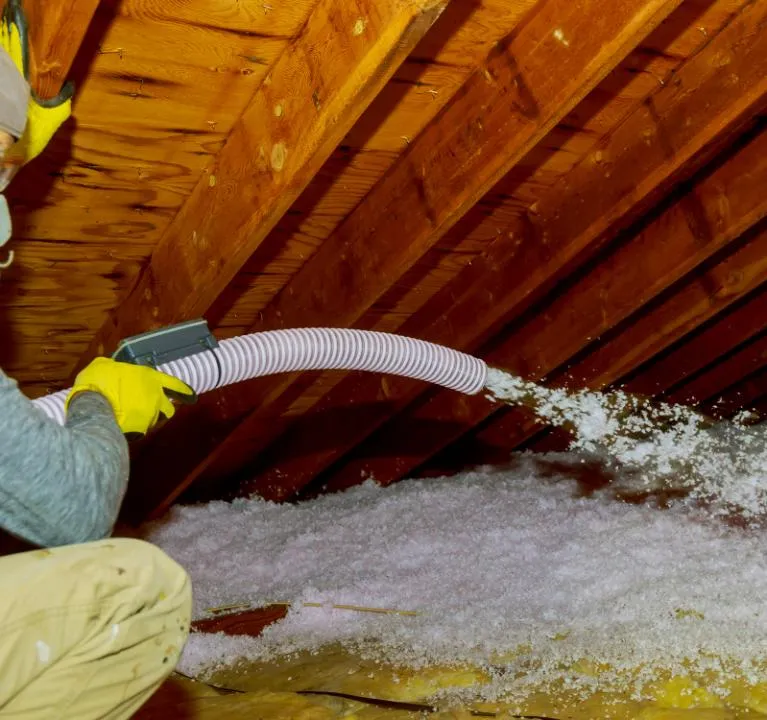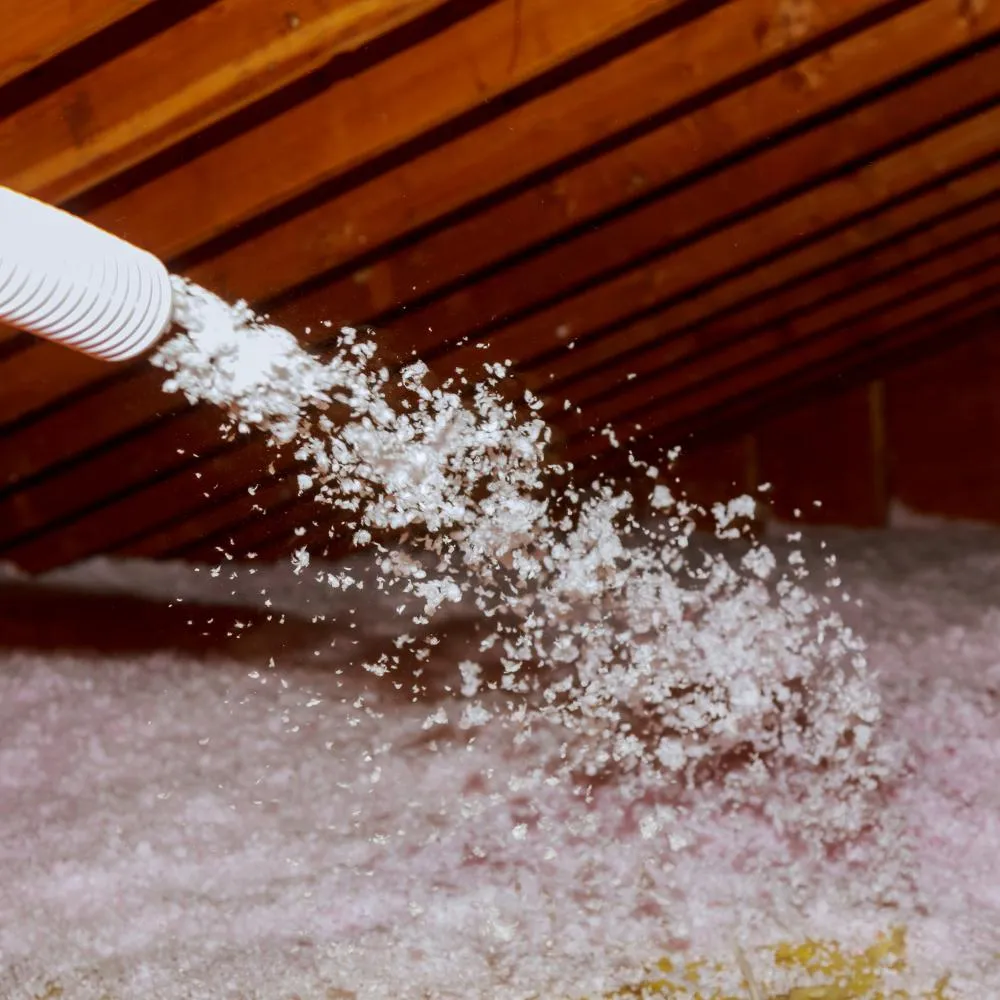BLOWN-IN INSULATION EXPERTS IN KENSINGTON
Professional Blown-In Insulation

Blown-In Insulation Experts
Often overlooked, blown-in insulation offers a versatile and effective solution for insulating new and existing buildings alike. We've found it particularly useful for spaces where traditional insulation methods are impractical. This type involves small particles of fiber, foam, or other materials that are blown into walls, attics, and between floors using special equipment. What makes it ideal is its ability to conform to the space it fills, providing a tight fit and reducing air leaks.
One major advantage is its installation speed. We can complete most residential projects in a day, significantly reducing disruption to your daily life. It's also energy-efficient, which means it can help lower heating and cooling costs over time. The material's flexibility allows us to target hard-to-reach areas that other types of insulation can't easily cover.
We've seen how effective this method can be in enhancing the overall energy efficiency of a home. It seals off drafts and cold spots, resulting in a more comfortable living environment. So, if you're looking for an insulation solution that's both efficient and economical, consider blown-in insulation. It's a choice that delivers immediate and long-term benefits for just about any building.
Advantages of Blown-In Insulation
After exploring the best practices for using spray foam in basements, it's worth considering another effective insulation option: blown-in insulation. We've found that one of the biggest advantages of blown-in insulation is its versatility. It's ideal for filling in odd-shaped or hard-to-reach spaces in attics and walls. This method involves blowing or spraying insulation material, typically fiberglass or cellulose, into spaces that need it, ensuring a tight fit and comprehensive coverage.
We also appreciate how blown-in insulation improves energy efficiency. It effectively seals air leaks and reduces the amount of heat that escapes during the winter and enters during the summer. This attribute not only keeps our homes more comfortable but also cuts down on heating and cooling costs.
Another benefit we can't ignore is the installation process. It's relatively quick and doesn't require extensive alteration to existing structures. This means less mess and disruption in our homes. Additionally, blown-in insulation is known for its sound-dampening qualities, making our living spaces quieter.
Considering these benefits, it's clear why we often recommend blown-in insulation as a top choice for both new construction and retrofit projects. It's an efficient, cost-effective way to enhance home comfort and energy performance.
Comparing Blown-In and Spray Foam Insulation
After exploring the cost considerations of spray foam insulation, let's compare it with another popular option: blown-in insulation. Both types have unique benefits and are suitable for different needs and budgets.
Spray foam insulation is known for its superior air-sealing properties. It expands to fill gaps and cracks, creating an effective barrier against air and moisture. This type of insulation typically offers a higher R-value per inch, which means it's more effective at reducing heat transfer. However, the installation process requires professional equipment and expertise, which can drive up the initial costs.
On the other hand, blown-in insulation, often made from fiberglass or cellulose, is less expensive and easier to install in hard-to-reach areas. While it doesn't expand like spray foam, it's excellent for adding insulation to existing finished areas, such as attics, without much disturbance. The R-value is slightly lower compared to spray foam, but it provides a cost-effective solution and is often sufficient for many homes.
Ultimately, the choice between spray foam and blown-in insulation depends on your specific insulation needs, budget, and whether the structure is new or existing. Both options improve energy efficiency, but the best fit varies based on individual project requirements.
Blown-In Insulation Process
We often recommend blown-in insulation as an efficient method for insulating attics and hard-to-reach spaces. This technique involves using a machine to blow fibrous insulation materials, such as fiberglass or cellulose, into designated areas. It's particularly effective for filling irregular spaces and covering existing insulation to boost energy efficiency.
Here's how we handle the process: First, we prepare the space by sealing any air leaks. This step is crucial as it prevents future energy losses. Next, we set up the insulation blower, which is connected to a large hose. We carefully feed the insulation material into the machine, which then propels it through the hose.
Our technicians strategically direct the flow to ensure an even distribution across the space. They pay special attention to corners and edges, areas where heat loss typically occurs. The density of the insulation is closely monitored to avoid settling and gaps, which are common pitfalls in less thorough installations.
Throughout the installation, safety is our top priority. We always wear protective gear and ensure the workspace is well-ventilated. By the end of the process, your home will be better insulated, helping to reduce heating and cooling costs significantly.
Take 10% Off Any Job Over $5,000
See how we can transform your outdoors

Get a free quote
Fill out the form below to request a free consultation
Connect With Us
© Copyright 2025 Kensington Spray Foam. All Rights Reserved.
Zip codes we serve:20895,20891,20896,20889,20814,20902,20892,20894,20852,20910,20815,20810,20811,20813,20824,20825,20827,20511,20916,20997,20907,20908,20911,20915,20918,20901,20015,20906,20851,20012,20897,20913,20817,20047

